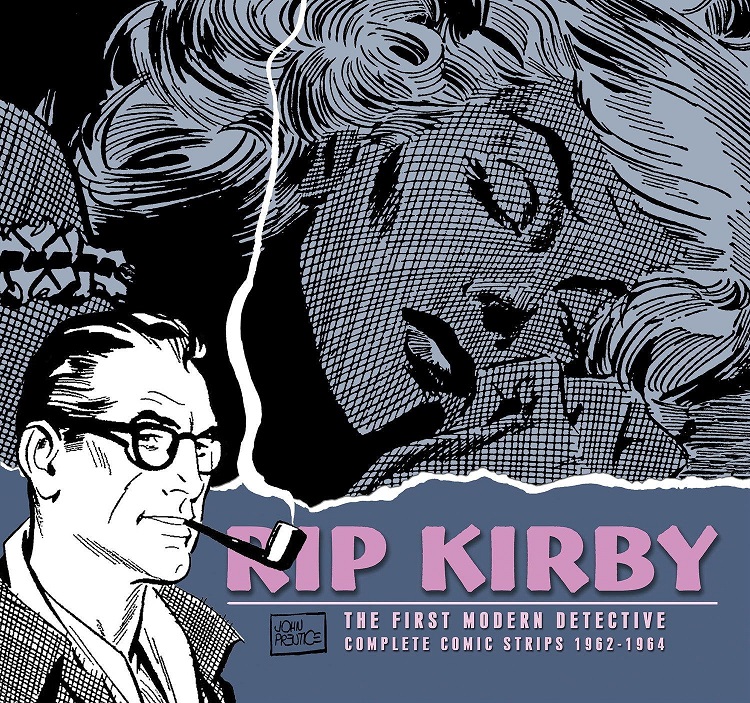
I can’t remember a time when sequential art didn’t play a huge role in my life. Whether it was riding my bike to the local 7-11 to pick up comic books filled with colorful superheroes or tearing apart the Sunday paper to get to “the funny section” before my siblings, I’ve always been enamored of this unique form of storytelling. As time has gone by, my appreciation for the medium has led me down many avenues and I’ve done my best to educate myself on various styles, genres, and methods of telling stories through pictures. But there was always one nut I could never seem to crack: the daily soap opera and adventure strips.
The funny animals, round-headed children, and wacky families that populate the gag-a-day strips in the newspaper were undoubtedly the gateway drug that got me and so many others interested in sequential art. The full color and lavishly illustrated Sunday exploits of Prince Valiant were a feast for my young eyes, even if I found the stories to be a bit dull, and as I grew older, I have fallen in love with Alex Raymond’s Flash Gordon, among others. But from childhood to adulthood, I have been baffled by the daily exploits of Mary Worth, Rex Morgan M.D., and even the Spider-Man comic strip. It’s not that I don’t appreciate the work; I’ve just never felt satisfied by only three measly panels per day. Perhaps it’s a result of my short-attention span or maybe it’s just because Mary Worth is about as stimulating as watching paint dry. Whatever the reason, it’s just something I’ve never been able to fully invest myself in.
Collected editions don’t always help either. Even though The Phantom is one of my all-time favorite characters, reading the Hermes Press edition of the Complete Newspaper Dailies was an exercise in frustration as the first panel of each installment seems to include a paragraph long recap of the entire story thus far. It was probably helpful to readers in 1936, but it’s a tough read in 2014. No matter how much I may drool over the artwork or how dedicated I am to serialized storytelling, reading daily comic strips with a continuing storyline has always left me feeling disjointed and unsatisfied. All of this, of course, is a long winded and roundabout way to inform you that John Prentice’s work on Rip Kirby has opened my eyes, albeit 50 years after the fact.
Now, those of you who are familiar with this strip are probably chuckling right now, possibly even muttering insults about me under your breath, and perhaps rightfully so. But then, that’s not why you’re reading this review anyway. You’re already familiar with Prentice’s clean artwork and understated, yet dynamic style. You know damn well that he can deliver what feels like a complete chapter of a story in just three panels and leave you hungry for more and you may even be aware of the fact that when reading a few days’ (or a few months’) worth of stories in an afternoon, the recaps and reminders about previous installments never feel forced or awkward.
No, you’re a longtime fan of the strip and you know how good it is. You’re not reading this review to find out whether or not you’ll like the book. You’ve been waiting for IDW and the Library of American Comics to release the seventh volume of this series in a beautiful hardcover edition. Well, the wait is over and I’m happy to tell you that you won’t be disappointed. Collecting over 800 comics from February of 1962 to October of 1964, this 293-page behemoth reprints the work of John Prentice (who took over the strip after Alex Raymond’s death in 1956) in stunning clarity. With three strips per page, the story moves along at a comfortable pace and the artwork is big enough to take in all the glorious detail. John Prentice doesn’t have a flashy, show-off style; he’s just a solid storyteller. The word “classic” comes to mind when viewing his work and the word “master” definitely applies to his talent.
Now, for those of you who fall into the other category, I hope I’ve made my point. If you, like me, have always been intrigued by this form of storytelling but haven’t found these types of strips to be an easy nut to crack, I’m here to tell you that Rip Kirby is as smooth and easy as peanut butter. Adventure, mystery, and comedy combine in a delightful collection of classic comic strips that are sure to both entertain and enlighten. And it’s all wrapped up in a classy hardcover complete with one of those fancy ribbon bookmarks! So not only do you get to enjoy great stories, you get to feel important too.
This isn’t the first time I’ve said that IDW and the Library of American Comics have done it again, and I’m sure it won’t be the last.